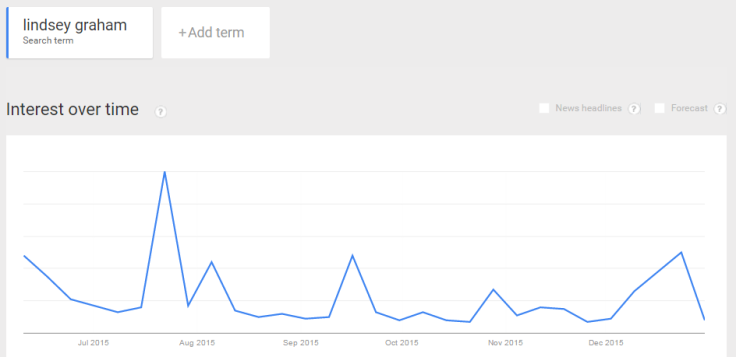GOP Candidates: If You Want More Media Attention, Get Owned By Trump Or Drop Out

Up until Tuesday night, you could be forgiven for not knowing who George Pataki is, let alone that he was running for president of the United States. If you happened to have turned on any of the Republican “kiddie table” debates this season, he would have wanted you to know him as the former governor of New York, whose experience included being in office during 9/11. But after roughly six months of campaigning into a void, Pataki called it quits Tuesday, having failed to reach even 1 percent in the latest CNN/ORC poll and get his message out amid the media’s daily Donald Trump safari.
That makes Pataki the latest Republican dropout to reveal a distinct pattern of media coverage. In a race this crowded, less colorful candidates in the GOP field appear to have two options for attracting more buzz: They can talk about — or get savaged by — Donald Trump, or they can drop out of the race entirely. Admittedly, it’s a slim playbook, but cursory data from Google Trends regarding some low-polling candidates confirms the pattern.
Peaks and Valleys, but Mostly Valleys
Google Trends data sketched the public’s interest in Pataki since he declared his candidacy. What we see is an initial bump from when Pataki first announced his run, followed by literal radio silence for several weeks until a peak in interest around Aug. 2. That was the week of Fox News Channel’s blockbuster Republican debate, the first of the season, which pulled in roughly 24 million viewers, a chance for Pataki and the entire field to bank some camera time.

After that, though, he sank back into obscurity until Sept. 16. Unsurprisingly, that was not only the date of a GOP debate but also the time that Donald Trump torched Pataki on Twitter as an irrelevant loser after the former governor dismissed Trump’s credentials for high office.
Why is someone like George Pataki, who did a terrible job as Governor of N.Y. and registers ZERO in the polls, allowed on the debate stage?
— Donald J. Trump (@realDonaldTrump) September 13, 2015Back down he went, flatlining aside from another mild debate boost, until his announcement on Tuesday that he was bowing out.
Join the Club
He is not alone. On Dec. 21, Sen. Lindsey Graham of South Carolina cooked up a similar withdrawal video, suspending his campaign after clocking in less than 1 percent in state and national polls.
Graham’s wit and syrupy Southern accent made him stand out a bit more than Pataki, but pull up the data for his visibility, and the pattern is clear: Graham got a spike in late July, when Donald Trump publicly ridiculed the hawkish senator for calling him a “jackass” and proceeded to leak Graham’s phone number during a rally. After that, the senator's share of headlines and web searches dwindled with only mild lifts from the debate nights.
The spike at the end is, of course, from the day of news coverage eulogizing his busted campaign.

Last in the lineup is Bobby Jindal, whose own children appeared unmoved when he filmed them reacting to his news that he’d be running for president of the country.
After his initial announcement in late June, Jindal clung to debate nights for any noticeable bumps in attention. Any juice he managed to squeeze out of CNN’s September debate was aided by a “Hail Mary pass” a few days earlier, in which he gave a speech entirely about Donald Trump.

“[H]ere's the problem: Donald Trump is not a serious candidate. He's a narcissist. He's an egomaniac. The only thing he believes in is himself. I want to say what everybody is thinking about Donald Trump but is afraid to say," he said at the National Press Club in Washington.
Trump mauled Jindal on Twitter a day later, noting, “Bobby Jindal did not make the debate stage and therefore I have never met him ... ”
Unfortunately for Jindal, America never really got to meet him either.
© Copyright IBTimes 2024. All rights reserved.












